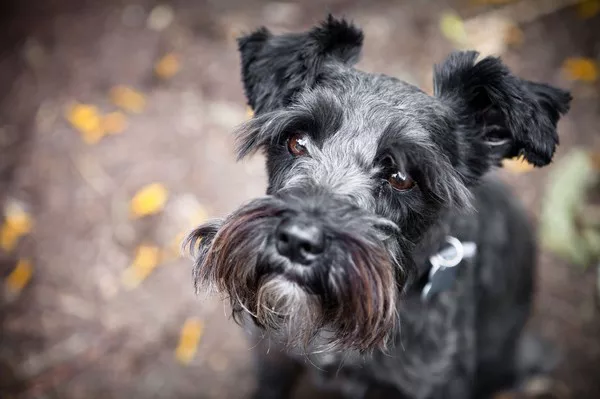Schnauzers are a popular breed group known for their distinctive beards, wiry coats, and lively personalities. There are three main types of Schnauzers: Miniature Schnauzer, Standard Schnauzer, and Giant Schnauzer. Among them, the Miniature Schnauzer is the smallest and most compact.
This article will explore the Miniature Schnauzer, detailing its history, appearance, personality, care requirements, and health considerations. Understanding this breed can help dog lovers determine if the Miniature Schnauzer is the right pet for their home.
Introduction to Schnauzers
Schnauzers originated in Germany and were initially bred as working dogs. They were commonly used for guarding property, herding livestock, and hunting vermin. Over time, breeders developed different sizes for different tasks.
- The Standard Schnauzer was the original breed, used for general farm work and guarding.
- The Giant Schnauzer was bred to be a powerful working dog, often used in police and military roles.
- The Miniature Schnauzer was developed to be a small but tough farm dog, specializing in hunting rats and other pests.
Among these, the Miniature Schnauzer is the smallest version and has become one of the most popular family dogs worldwide.
What Is the Smallest Schnauzer?
The Miniature Schnauzer – The Smallest Schnauzer Breed
The Miniature Schnauzer is the smallest type of Schnauzer, standing between 12 to 14 inches (30 to 36 cm) tall at the shoulder and weighing between 11 to 20 pounds (5 to 9 kg).
Despite its small size, this breed is known for its bold personality, intelligence, and energy. It maintains many of the strong characteristics of its larger relatives but in a more compact and manageable size.
History and Development of the Miniature Schnauzer
Origins in Germany
The Miniature Schnauzer originated in Germany in the late 19th century. It was created by breeding the Standard Schnauzer with smaller breeds such as:
- Poodles (for intelligence and hypoallergenic coat)
- Affenpinschers (for small size and terrier instincts)
The goal was to produce a compact, efficient farm dog that could hunt rats while retaining the Schnauzer’s intelligence and hardworking nature.
Recognition as a Separate Breed
The Miniature Schnauzer was recognized as a distinct breed in the early 20th century. It quickly gained popularity due to its small size, friendly nature, and suitability as a family pet. Today, it is one of the most popular small dog breeds in the world.
Appearance and Physical Characteristics
Distinctive Features
The Miniature Schnauzer is easily recognizable due to its unique appearance. It shares many physical traits with its larger relatives but in a more compact form.
Key Features of the Miniature Schnauzer:
- Compact and sturdy body – Unlike fragile toy breeds, the Miniature Schnauzer has a strong, muscular build.
- Wiry coat – This breed has a thick, double-layered coat that requires regular grooming.
- Iconic beard and eyebrows – These give the Schnauzer its serious, expressive look.
- Tail and ears – Traditionally, their tails were docked and ears cropped, but in many countries, this practice is now discouraged.
Coat Colors
The Miniature Schnauzer comes in three recognized colors:
- Salt and Pepper (most common)
- Black
- Black and Silver
Some Miniature Schnauzers may also be white, but this color is not recognized in all breed standards.
Personality and Temperament
Lively and Intelligent
The Miniature Schnauzer is known for its high intelligence and eager-to-please nature. This makes it highly trainable and capable of learning many commands and tricks.
Affectionate and Loyal
Miniature Schnauzers form strong bonds with their families and are known for their affectionate nature. They thrive on human companionship and enjoy spending time with their owners.
Alert and Protective
Despite their small size, Miniature Schnauzers make excellent watchdogs. They are highly alert and will bark to alert their owners of strangers. However, they are not aggressive and are generally friendly with proper socialization.
Playful and Energetic
This breed has a high energy level and enjoys activities such as:
- Playing fetch
- Going for walks
- Participating in agility training
Care and Maintenance
Exercise Needs
Miniature Schnauzers are energetic and require daily exercise to stay healthy and happy. A combination of walks, playtime, and mental stimulation is recommended.
Grooming Requirements
Their wiry coat requires regular maintenance to prevent tangling and matting. Grooming needs include:
- Brushing at least 2-3 times a week
- Professional grooming every 6-8 weeks
- Trimming of beard and eyebrows to maintain their signature look
Diet and Nutrition
A balanced diet is essential for a Miniature Schnauzer’s health. This breed is prone to weight gain, so portion control and a high-quality diet are important.
Health Considerations
Miniature Schnauzers are generally healthy dogs, but they are prone to certain genetic health conditions:
Common Health Issues:
- Pancreatitis – Caused by a high-fat diet; proper nutrition is crucial.
- Bladder Stones – They are prone to developing urinary stones; proper hydration is essential.
- Diabetes – They have a higher risk of diabetes compared to some other breeds.
- Eye Problems – They can suffer from cataracts and progressive retinal atrophy (PRA).
Lifespan
The average lifespan of a Miniature Schnauzer is 12 to 15 years. With proper care, diet, and regular vet check-ups, they can live long, healthy lives.
Conclusion
The Miniature Schnauzer is the smallest of the Schnauzer breeds, standing at 12 to 14 inches and weighing between 11 to 20 pounds. Despite its small size, it is an intelligent, energetic, and affectionate breed that makes a wonderful companion for many households.
With its distinctive appearance, lively personality, and strong loyalty, the Miniature Schnauzer continues to be a favorite breed worldwide. Proper care, training, and socialization are key to ensuring that this small but mighty dog thrives in any home.
Related topics:
What’s the Characteristics of a Shar Pei
Why Do Shar-Peis Have a Bad Reputation?


